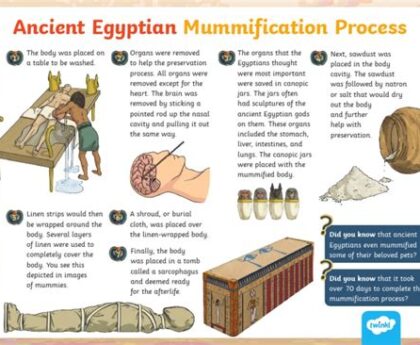Discover the Rich and Complex History of Japan
Japan has a rich and complex history that has captivated historians and enthusiasts alike for centuries. From its early days marked by mythical emperors to its transformation into a technological powerhouse, Japan’s story is one of resilience, innovation, and profound cultural evolution. This blog post will take you on a fascinating journey through the various eras that have shaped modern Japan. You’ll learn about the significant events, influential figures, and cultural milestones that make Japan’s history so compelling.
The Mythical Beginnings
The Age of the Gods
According to Japanese mythology, the history of Japan begins with the gods. The most significant myth involves the sun goddess Amaterasu, who is considered the progenitor of the Japanese imperial family. These myths were first recorded in the Kojiki and Nihon Shoki, two ancient texts that provide invaluable insights into Japan’s early beliefs and traditions.
The First Emperor
The legendary Emperor Jimmu, believed to be a direct descendant of Amaterasu, is said to have founded Japan in 660 BCE. Although his existence is more mythological than historical, Jimmu plays a crucial role in shaping the national identity and legitimizing the imperial lineage.
Ancient Rituals and Beliefs
Early Japan was deeply spiritual, with rituals and beliefs centered around nature and ancestor worship. Shinto, the indigenous religion, emerged during this period, emphasizing harmony with nature and the worship of kami (spirits).
The Yamato Period
The Rise of the Yamato Clan
The Yamato period (250-710 CE) marks the emergence of a unified Japanese state under the Yamato clan. This era saw the consolidation of power and the establishment of the imperial court in Nara. The Yamato rulers adopted Chinese political and cultural practices, including the writing system and Confucian principles.
Cultural Exchange with China
The Yamato period was characterized by significant cultural exchange with China. Buddhism was introduced to Japan in the mid-6th century, profoundly influencing Japanese art, architecture, and philosophy. The introduction of Chinese characters (kanji) revolutionized Japanese writing and record-keeping.
The Taika Reforms
In 645 CE, the Taika Reforms aimed to centralize power and strengthen the emperor’s authority. These reforms restructured the government and land distribution, laying the foundation for Japan’s future political systems.
The Heian Period
The Golden Age of Art and Literature
The Heian period (794-1185 CE) is often considered the golden age of Japanese culture. The imperial court, now based in Kyoto, became a hub for art, poetry, and literature. Murasaki Shikibu’s “The Tale of Genji,” written during this time, is considered the world’s first novel and remains a literary masterpiece.
Aristocratic Life
Life in the Heian court was marked by elegance and refinement. Aristocrats engaged in elaborate rituals, poetry contests, and intricate courtship practices. The period’s aesthetics, characterized by delicate beauty and understated elegance, continue to influence Japanese culture.
The Rise of the Samurai
Towards the end of the Heian period, regional military clans gained power, leading to the rise of the samurai class. These warrior elites would play a pivotal role in Japan’s history, shaping its military and cultural landscape for centuries to come.
The Kamakura and Muromachi Periods
The Kamakura Shogunate
The Kamakura period (1185-1333 CE) saw the establishment of the first shogunate, a military government led by the shogun. Minamoto no Yoritomo became the first shogun, marking the beginning of feudal Japan. The samurai class solidified its role as the ruling elite, adhering to a strict code of honor known as bushido.
The Mongol Invasions
In the late 13th century, Japan faced two attempted invasions by the Mongol Empire. Despite being outnumbered, the Japanese successfully repelled the invaders, thanks in part to the “divine winds” (kamikaze) that destroyed the Mongol fleet. These events reinforced the samurai’s belief in their divine protection and military prowess.
The Ashikaga Shogunate
The Muromachi period (1336-1573 CE) followed the Kamakura shogunate’s fall. It was a time of political instability and conflict but also cultural flourishing. The Ashikaga shoguns, who ruled from Kyoto, patronized the arts, leading to the development of Noh theater, tea ceremonies, and ink painting.
The Sengoku Period
A Time of Warring States
The Sengoku period (1467-1603 CE) was marked by nearly constant warfare between rival daimyo (feudal lords). This era of chaos and conflict saw the rise of several powerful warlords who sought to unify Japan under their rule.
Oda Nobunaga’s Ambitions
Oda Nobunaga, one of the most ambitious and ruthless warlords of the Sengoku period, played a crucial role in Japan’s unification. His innovative military strategies and use of firearms helped him conquer much of Japan before his untimely death in 1582.
The Legacy of Toyotomi Hideyoshi
Toyotomi Hideyoshi, a former peasant who rose through the ranks to become one of Nobunaga’s top generals, continued his master’s work. By 1590, Hideyoshi had unified Japan, bringing an end to the Sengoku period. He implemented several social and economic reforms, including a rigid class structure and land surveys.
The Edo Period
The Tokugawa Shogunate
The Edo period (1603-1868 CE) began with Tokugawa Ieyasu’s establishment of the Tokugawa shogunate. This era was marked by relative peace and stability, as the Tokugawa shoguns maintained strict control over the daimyo and enforced a policy of national isolation (sakoku).
The Flourishing of Culture
Despite its isolation, the Edo period saw a flourishing of Japanese culture. The ukiyo-e art form, kabuki theater, and haiku poetry all emerged during this time. The merchant class also grew in wealth and influence, contributing to a vibrant urban culture.
The Opening of Japan
In 1853, Commodore Matthew Perry’s arrival forced Japan to open its ports to foreign trade, ending over two centuries of isolation. This event marked the beginning of the end for the Tokugawa shogunate and set the stage for Japan’s modernization.
The Meiji Restoration
The Fall of the Shogunate
The Meiji Restoration of 1868 saw the overthrow of the Tokugawa shogunate and the restoration of imperial rule under Emperor Meiji. This period marked a profound transformation in Japanese society, as the new government sought to modernize and industrialize the country.
Rapid Modernization
The Meiji government implemented sweeping reforms, including the abolition of the feudal system, the establishment of a modern education system, and the adoption of Western technology and industry. Japan rapidly transformed into a modern, industrialized nation, rivaling Western powers.
Imperial Ambitions
Japan’s newfound strength fueled its imperial ambitions. The country expanded its territory through military victories in the First Sino-Japanese War (1894-1895) and the Russo-Japanese War (1904-1905), establishing itself as a dominant power in East Asia.
The Taisho and Early Showa Periods
The Taisho Democracy
The Taisho period (1912-1926) saw a brief experiment with democratic governance, as political parties gained influence and the military’s power waned. This era was marked by social and cultural change, with increased urbanization and the spread of Western ideas.
The Rise of Militarism
The early Showa period (1926-1945) saw the resurgence of militarism in Japan. The Great Depression and political instability fueled nationalist sentiment, leading to the rise of military leaders who sought to expand Japan’s empire.
World War II
Japan’s aggressive expansionism culminated in its involvement in World War II. The attack on Pearl Harbor in 1941 brought the United States into the war, leading to brutal conflict in the Pacific Theater. The war ended with Japan’s defeat and the devastating atomic bombings of Hiroshima and Nagasaki in 1945.
Post-War Japan
American Occupation and Reconstruction
Following its surrender, Japan was occupied by Allied forces led by the United States. The occupation brought significant political, economic, and social changes, including the adoption of a new constitution that established a democratic government and renounced war.
Economic Miracle
In the decades following the war, Japan experienced an economic miracle, rapidly transforming into one of the world’s leading industrial powers. The country’s export-driven economy, characterized by high-quality manufacturing and technological innovation, propelled it to global prominence.
Cultural Renaissance
Post-war Japan also saw a cultural renaissance, as traditional arts and crafts were revitalized alongside the emergence of new forms of expression. Japanese cinema, literature, and pop culture gained international acclaim, contributing to the country’s global influence.
Modern Japan
Technological Advancements
Modern Japan is synonymous with technological innovation. The country is a global leader in robotics, electronics, and automotive industries. Companies like Sony, Toyota, and Panasonic have become household names, driving Japan’s reputation as a tech powerhouse.
Social Challenges
Despite its successes, Japan faces several social challenges, including an aging population, declining birth rates, and economic stagnation. The government is implementing various policies to address these issues, including immigration reforms and efforts to boost domestic consumption.
Cultural Continuity
Japan continues to balance tradition and modernity, preserving its rich cultural heritage while embracing new ideas and technologies. Festivals, tea ceremonies, and traditional arts remain integral to Japanese life, coexisting with the latest trends in fashion, entertainment, and technology.
Japan’s history is a testament to its resilience, adaptability, and innovation. From its mythical beginnings to its current status as a global power, Japan has continually reinvented itself while preserving its unique cultural identity. For history enthusiasts, Japan offers a captivating and multifaceted story that continues to unfold.
If you’re eager to explore more about Japan’s rich history or plan a visit to its historical landmarks, consider joining a guided tour or attending a lecture by a Japanese history expert. There’s always more to learn and discover about this fascinating nation.




